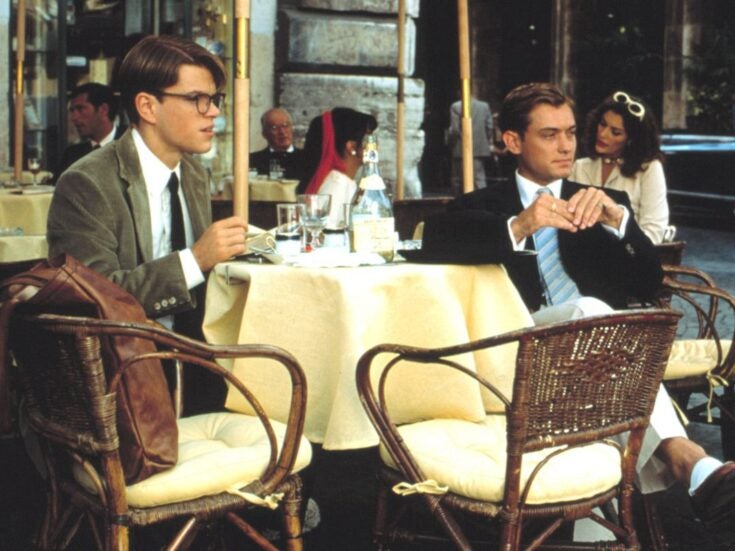Old money, gold money, no money – all in this issue’s Hedgehog
NO MO’ FOs
Like little green men and free will, some people deny that they even exist, but that didn’t stop law firm Lawrence Graham debating the future of multi-family offices. A common objection is that they are really just small wealth-management firms seizing on a popular name; two years ago, everything was ‘luxury’ (even when it was mass-produced) — now branding yourself an MFO is the chic thing.
The vigorous discussion (ding-dong would be fairer) was split between the bankers, who said they saw through the MFO sham, and the family officers, who stood up for their sector. The theoretical advantage of an MFO was clear: in a nifty poll, conducted with ask-the-audience remote voting units, nearly three-quarters said that independence was the best attribute of the MFO model, far ahead of monitoring (15 per cent), asset allocation (12 per cent) and investment management (5 per cent).
Jonathan Bell of Stanhope Capital outlined their niche: ‘We need to position ourselves between single-family offices, which have the alignment with their client’s interests but not the depth, and the big banks, which have the expertise,’ but are always pushing their products. ‘We need to be a hybrid — there’s no point having independence without expertise.’
One of the issues in the debate was whether MFOs, with their relatively few analysts, could cover enough of the waterfront in sufficient depth.
Charlie Hoffman, managing director of HSBC Private Bank, said MFOs were appearing far too quickly, lowering the reputation of the sector: ‘Every man, woman and dog is dragging a client out of a private bank and calling themselves an MFO. They’re risking implosions for their clients.’
Another senior figure from a major private bank was equally critical: ‘It makes sense to have your own advisers if you are a single family, but you can’t do that for a big group of people: that’s what wealth managers do. MFOs are simply an intermediary between SFOs and multinational banks; it’s the disappointment on the client’s part and their lack of confidence in the wealth managers giving them personal, relevant and well-priced services which caused people to have their own advisers.’
Other questions voted on reflected the need for independence (65 per cent felt MFOs should not have products to sell), but there was ambivalence about how absolutely useful or beneficial they were: 45 per cent felt MFOs were a viable alternative to private banks, while 45 per cent were unsure, probably reflecting the vested interests of the audience’s private bankers and MFO managers. MFOs were felt to add value by negotiating lower fees from managers, but 87 per cent were worried that an MFO with a dominant family could skew investment interests.
The debate was co-hosted by Caroline Garnham, partner in private capital at Lawrence Graham and founder of the Family Bhive, and Sebastian Dovey of Scorpio Partnership.
YOU’RE INDESTRUCTIBLE
Gold at $1,000, gold at $1,100, gold at $1,200 — where will it end? And more to the point, how will you get yours? Advisers talk about balanced portfolios, but the portfolio ballasted with gold is surely sturdier.
Jason Cozens, a serial internet entrepreneur, was looking into investing in gold but found the range of options — buying shares in a gold producer or a gold mine, buying bullion, buying an ETF — too numerous and their restrictions too laborious. Apart from a few shops (notably Harrods — where else?), one cannot buy bullion over the counter, and when one does buy a share of some gold, it is rarely allocated and deliverable. If you want to touch
it, tough luck.
That is why Jason decided to set up goldmadesimple.com, through which one can buy gold with a .9999 purity rating from members of the London Bullion Market Association and have it delivered, which is unusual — most gold, being a fraction of an ingot, sits in some dank Swiss vault, miles underground and probably guarded by dragons. The website offers real-time prices and a buy-back guarantee, 2 per cent below spot price.
The ‘safe haven’ aspect is one Jason is keen to stress, saying that ‘this experiment with paper currencies has led us into this mess’. His pessimism about the inevitable problems caused by quantitative easing (‘It calms the populace — until it has to take its medicine’) and the like is only matched by his bullish optimism about gold.
Financial notice: the price of gold may go up as well as up.

AND HIS SCARF WAS APRICOT…
There are collectors of art who are the most discriminating, the most learned, who spend years studying art history, visiting galleries, talking to artists and developing a deep appreciation for what a picture really means. And then there’s Prince Andrew.
One of the latest additions to Mayfair’s gallery circuit is the Apricot Gallery on Albemarle St, which specialises in contemporary Vietnamese art. HRH was there to open the gallery and as a collector, having picked up a couple of Pham Luan’s highly textured Derain-via-Hanoi landscapes and city-scapes on his official missions. He gave a short speech and cut a ceremonial ribbon, alongside HE Mr Tran Quang Hoan, the Vietnamese ambassador to the UK.
When Hedgehog spoke to him, the Prince was looking at Le Quy Tong’s Long Bien Bridge, where you stare down a bridge (painted in sharp strokes so that it seems almost translucent yet still oppressive in its size) to the vanishing point. To the suggestion that looking down the bridge felt like staring into the future (his, ours, Vietnam’s), he burst out laughing: ‘You art people have some weird thoughts! It’s just a bridge!’ Indeed…
As communist cupcakes circulated (red icing, yellow star), HRH met Apricot’s owner, Dat Ngo, who already has other Apricot Galleries in Vietnam; the artist Pham Luan; and other Asia-related dignitaries. Asia House CEO Roddy Gow was there, too, as were several British diplomats.
All this is by way of previewing the subject Spear’s will be delving into in the next issue: Asia. If you want to be first with the news of a Spear’s/Asia House debate this autumn, email newsletter@spearswms.com.
DIVORCING TOGETHER
We can do this the easy way or the hard way. The hard way will be much more fun (and bring much more emolument) for our lawyers and will probably result in at least one of us having a nervous breakdown. The easy will be cheaper, quicker, less stressful and may even not make our children hate us.
When you put it like that, divorcing using the process of collaborative law — rather than an immediate appearance in court, QCs’ gowns gently flapping in the cross-currents of legal hot air — seems a rather sane solution. It is certainly one which a growing number of HNWs are taking up.
Gillian Bishop, a trained collaborative lawyer with Family Law in Partnership, has produced A Client’s Guide to Collaborative Divorce, a brief but useful manual which explains the basic principles: the court is not involved, except to endorse the settlement; the divorcing couple must act openly and civilly; the lawyers work together, not against one another.
One of the best things about collaborative law for HNWs, says Gillian, is that ‘it allows for privacy, because everything is conducted out of the public eye’, unlike in courts (now more open than ever). She cites the US divorce of Roy Disney, which made little press because they did not drag it through the courts. ‘There are no statements on the court steps, no glasses of water thrown.’ Anecdotally, she has heard of a £180 million divorce handled collaboratively.
But surely it is in the lawyers’ interest to ensure long and messy divorces? Fees can mount up quickly. Yes, says Gillian, ‘if they’ve got a short-term view, and they’ll make much more money by taking it to court, but what you get much more frequently with collaborative law is satisfied clients who will recommend you. It’s not a panacea, but I don’t think it serves lawyers well when money is as tight as it is these days. Clients are much more discerning.’
The keyword, Gillian says, is ‘humane’: by talking rather than fighting, you may survive your divorce and even be happy on the other side.
DANT ON DRINK
It’s not often that Spear’s cover artist Adam Dant is let into the wine cellar — he learnt his lesson long ago. But this time he promised it was just to get inspiration for some drawings, so he was given the keys. The result (apart from an empty case of Latour ’82) was his Dant on Drink exhibition at the New Art Gallery, Walsall, a powerhouse among regional galleries.
He’s not the first artist to be inspired by the grape (or the grain) — Bruegel and Hogarth were eminent painters of the plastered. Indeed, Adam modelled his Fight between Temperance and Liquor on Bruegel’s Battle between Carnival and Lent (although presumably Bruegel had never seen the Walsall streets where Adam has set his).
Sally Army ladies march, screeching temperance, while frock-coated men assault one another and a serving wench is poised to strike — with a teapot — a solider in Cavalier uniform (complete with floppy hat) who is groping a second wench. Meanwhile, a deer has knocked over a bishop. So just another Friday night in Walsall, then.
The second piece is called British Drinking, where synonyms for ‘drunk’ are rendered visually in the streets around Adam’s Shoreditch studio: a man has nailed his hand to the floor; another has pies thrown at his eyes; a woman, déshabillée, is pushed down the street in a trolley. This drawing is testament not just to the ceaseless variety with which the British are able to describe their unending quest to obliterate their livers, but also to Adam’s skill as a miniaturist on a major scale.
For those lucky enough to obtain a copy of the catalogue, Spear’s arts editor Anthony Haden-Guest has
contributed the introduction, where he expatiates on the dangers of drink, as well as its pleasures. Turns out
that the Spear’s staff are rather a bibulous bunch.
Hic!
As I said.

INVESTMENT OUTLOOK: FAIR
HNW business angels are more in demand than ever, the London Investment Fair recently showed: the Budget’s increase in capital gains tax from 18 to 28 per cent is making them more likely to invest in early-stage businesses. It also showed that they believe they are doing the work banks refuse to in loaning money to young companies.
Peter Fergusson, a former partner with Norton Rose and former MD of Norsk Hydro UK, said: ‘If they retain the EIS rules, certainly it will not have a negative effect’ on early-stage investment. He said it was ‘a privileged investment’ both because of tax saved and because losses could be offset against other tax liabilities.
Martin Stephenson, who runs his own property and construction company, said: ‘My feeling is that two-thirds are more likely to invest,’ although his decisions, he stressed, were based on the right opportunity, with tax structuring second.
The feeling among other investors was that the CGT changes were likely to bring greater investment into the businesses represented at the fair, young companies from a variety of sectors.
There was also a clear mood that banks were not playing their traditional role in supporting young companies. Roy Anderson, who was representing a private investment company, said that angel investors ‘are fulfilling a vital role: the banks won’t touch companies like these, particularly for the scale of investment that’s required’.
Fergusson agreed, saying: ‘The banks aren’t in this space. These companies won’t even have an overdraft — three or four years ago they would have been able to raise a substantial portion of what they need.’
The London Investment Fair is run biannually by Beer & Partners, a business angel network in which Luke Johnson has recently invested.
UNE MAISON MAGNIFIQUE!
It is no longer possible just to have a shop, selling things — far too vulgar, even when the crêpe paper is the softest and the assistant the oiliest. It seems that commercial ventures have to be clothed, swaddled, hidden in the robes of Art, as something to elevate them above mere lucre. The aim, it seems, is to make a transaction transcendent: add a Gilbert and George photo and suddenly you’re not shopping — you’re having an experience.
That, at least, is how one can read the new Maison Louis Vuitton, which is half a block of delicious leather goods and Marc Jacobs-designed clothes on New Bond Street. The Maison, which ‘reflects Louis Vuitton’s art-de-vivre and savoir-faire, is conceived as the home of a collector’ (according to the book which accompanied the opening).
Jeff Koons’s Little Girl is in the second floor Apartment; there is a grotesque Murakami in the custom jewellery area; and Hirst trunks (luggage, not elephant) adorned with butterflies sit beside the Libraire. There is no doubt it is impressive, as Catherine Deneuve, Elle Macpherson and Bernard Arnault saw at the party to celebrate the opening, with French lacquer and ‘the brand’s signature Aniegre wood’ over every spare inch, but does the conflation of art and shopping lower both of them?
The answer is almost certainly yes — elsewhere. There are shops, and indeed restaurants and hotels, which buy up art because it’s what one does: open a boutique hotel, stick some paintings in it. The Fondation Louis Vuitton, however, has been trying to integrate art into its business for some years now, and Arnault is himself a collector (if not quite on arch-rival François Pinault’s scale).
What feels false elsewhere sits naturally at Louis Vuitton because brand values cohere, even if unintentionally. (Which luxury brand could rationally ally itself with what Damien Hirst has to say about wealth?) That is what makes the art-business nexus shiny rather than shameful — when it matches the brand.
AT-TENT-ION!
Spear’s has no truck with ‘glamping’ — glamorous camping — not because we don’t believe that sleeping under canvas can’t be salubrious, elegant and enjoyable even, but because it’s a horrid word coined by lazy PRs. (See under: ‘staycation’.)
When it comes to the stylish side of camping, we’re first to pin the guy ropes (or whatever it is we were supposed to learn at Scouts), which is why Spear’s is media partner of the Serenata Festival in Dorset, Britain’s first classical music festival, Glastonbury on the south coast — tents and all.
The festival is on the Smedmore Estate in Kimmeridge, which leads on to the ancient Jurassic coast (which would give a new resonance to Britten’s Sea Interludes), rather than the mud-sodden fields of Somerset, which makes it far more civilised.
As well as Katherine Jenkins and Russell Watson headlining, backed by a 48-piece orchestra, there will be slots for emerging artists and musical workshops, plus those festival favourites, fast-food stands, but refracted through a sophisticated sensibility: none of those mysterious hotdogs here, only organic and free-range and hand-picked.
What will appeal to Spear’s readers who are perhaps unaccustomed to performing any feat of construction greater than approving plans for the new pool house is the Serenata Boutique Camp. Here each tent (already erected, no fear) is a seven-metre emperor tent, complete with double bed, White Company linen and butler service.
If you combine this with a ticket to the Serenata Club, you not only get your queen of tents but also a clubhouse with a view on to the stage, plus complimentary wine, lunches, afternoon teas, champagne and dinners — and even another opportunity to pick up Spear’s.
Especially for Spear’s readers, Serenata is offering 10 per cent off tickets to the Serenata Club. Call 023 8071 1834 and quote ‘Spear’s’, or contact jamesdonald@serenatafestival.com for more information.
Cartoons by George Leigh

The Hedgehog is sponsored by B Capital






